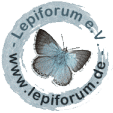3. Weitere Informationen
3.1. Etymologie (Namenserklärung)
Die Namenserklärung von Falck & Karsholt (2025: 15) ist wenig überraschend: "The species is named after the variable adults."
3.2. Taxonomie und Faunistik
Die neue Stomopteryx-Art gilt als Endemit der Kanarischen Inseln, ist dort aber auf fast allen größeren Inseln (außer Fuerteventura und Lanzarote) in Höhenlagen oberhalb 150 m zu finden (Gran Canaria, Teneriffa, La Gomera, La Palma, El Hierro). Dabei gibt es größere Unterschiede im Erscheinungsbild der Falter und auch beim Barcoding ergibt sich kein einheitliches Bild. Doch insgesamt spricht alles für eine einzige variable Art. Falck & Karsholt (2025: 15) berichten: "DNA barcodes (Figure 66): We obtained full length DNA barcodes (658 bp) from ten specimensand DNA barcode fragments of 621 bp, 622bp 632 bp and 584bp from four specimens. The barcodes fall within three Barcode Index Numbers (BIN) BOLD: AEI4402 (four specimens from Tenerife), BOLD: AEI0944 (three specimens from Gran Canaria) and BOLD: AEN4981 (seven specimens from La Gomera (3), La Palma (2) and El Hierro (2)). The minimum p-distance between the BINs is 1.86 % (AEN4981 vs. AEI4402), 3.09 % (AEI0944 vs. AEI4981) and 3.49 % (AEN4981 vs. AEI4402). The maximum intraspecific p-distance is very high 4.28 %. The minimum p-distance to nearest neighbour, an unnamed Gelechiidae species from South Africa, is 5.68 %." Sie kommentieren: "Despite the high intraspecific divergence in COI and the very high variation in adult appearance between the island populations, we were not able to find morphological differences in thegenitalia. Further, the DNA barcodes suggests that only one species is involved. The maximum intraspecific p-distance in BIN BOLD: AEN4981 is only 1.28%, which includes very different looking specimens e.g., between populations from El Hierro and La Palma. Single specimens from Tenerife aresimilar to specimens from both La Gomera and Gran Canaria. There is also no correlation in size of the signa between the different populations."
3.3. Typenmaterial
Falck & Karsholt (2025: 12) erklären: "Holotype ♀: SPAIN, TENERIFE; Aguamansa, 1300 m, 1-VIII-1979, leg. P. Stadel Nielsen, genitalia slide 4160OK (ZMUC)." Dazu kommt eine riesige Serie von 300 (!) Paratypen von - bis auf Fuerteventura und Lanzarote - allen größeren Kanarischen Inseln.
(Autor: Erwin Rennwald)
3.4. Literatur
- Erstbeschreibung: Falck, P. & O. Karsholt (2025): Gelechiidae of the Canary Islands (Spain). Part 1. Anacampsinae (Insecta: Lepidoptera). — SHILAP Revista de lepidopterología, 53 (209): 5-41. [PDF auf shilap.org]




![Vorkommen auf den Kanarischen Inseln [Endemit der Kanaren]](/res/img/flag/es-cn.png)

